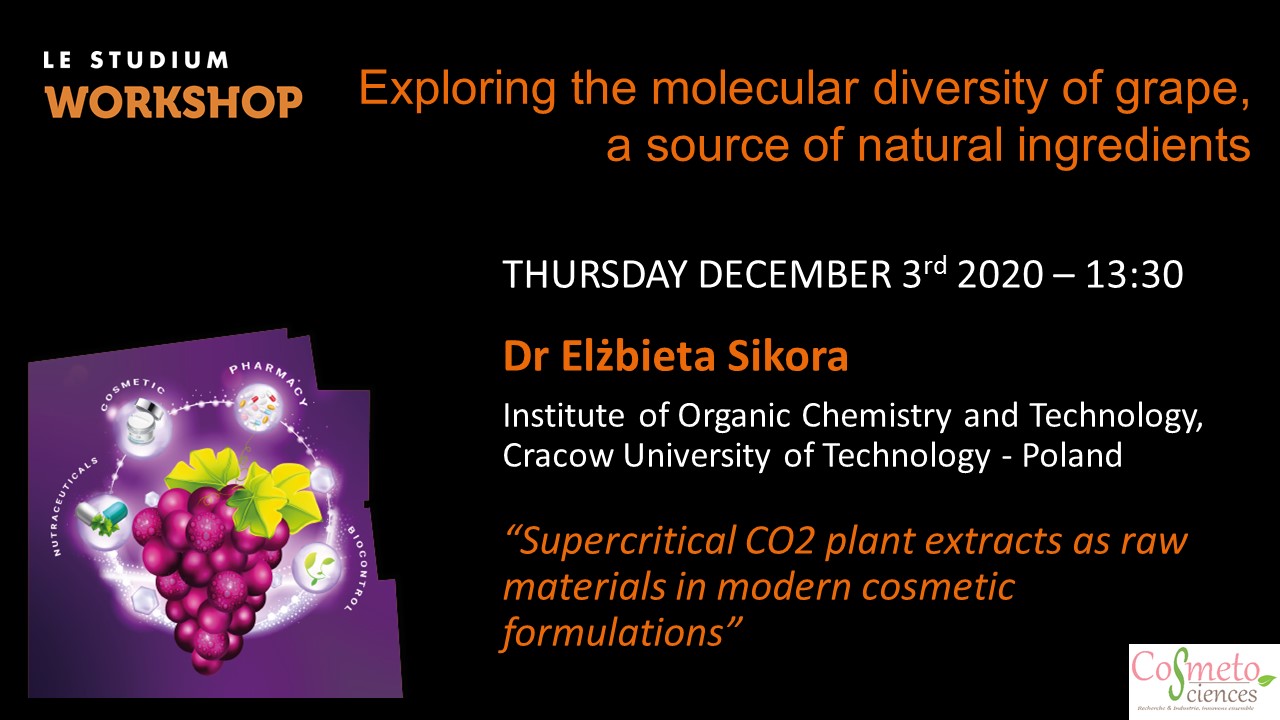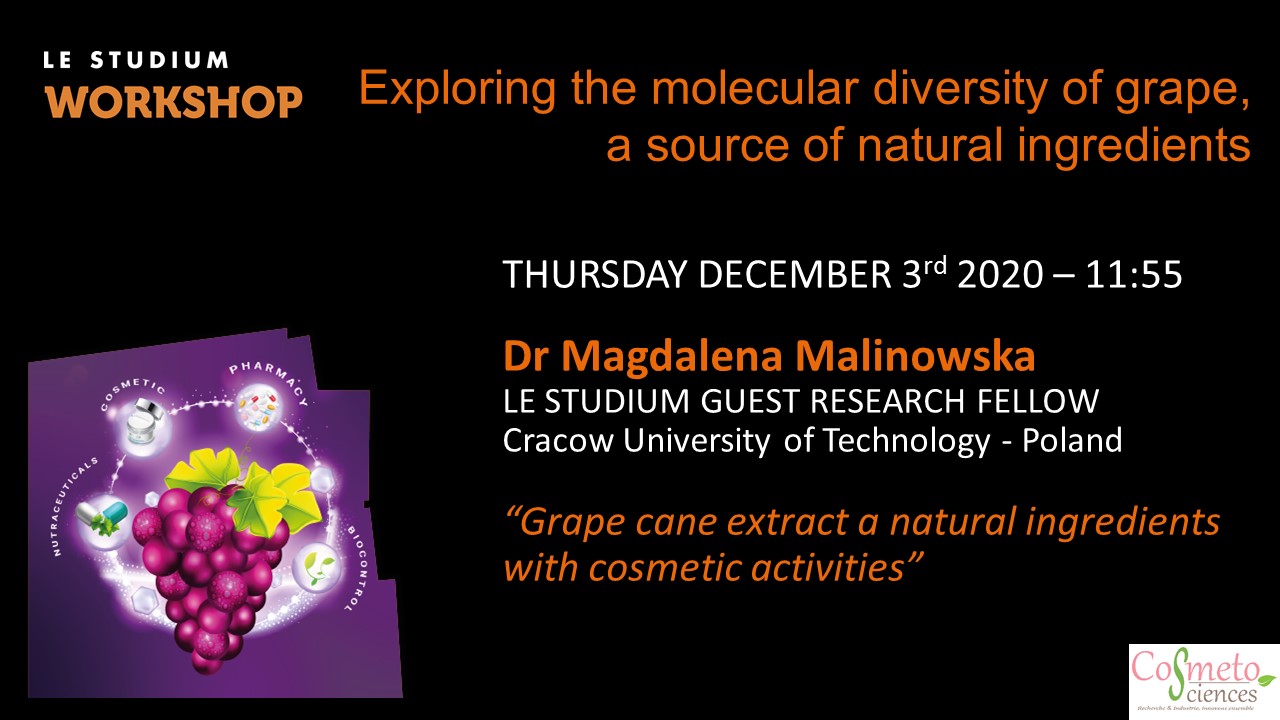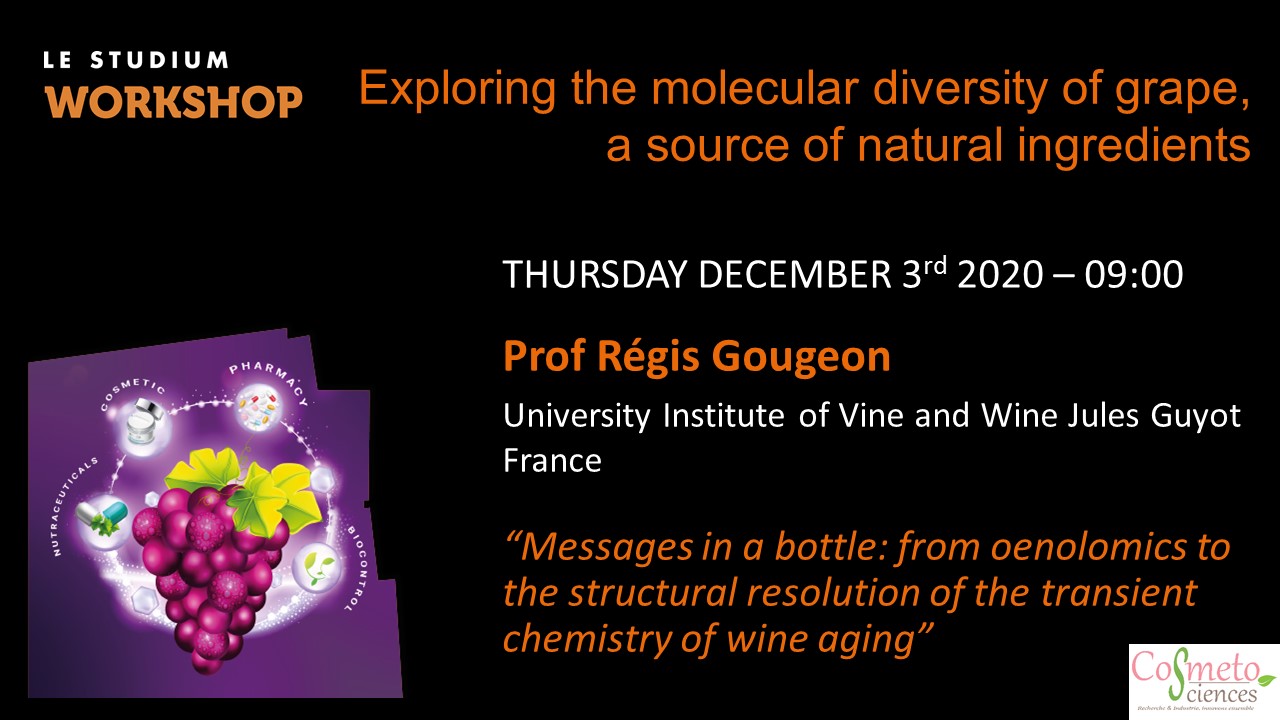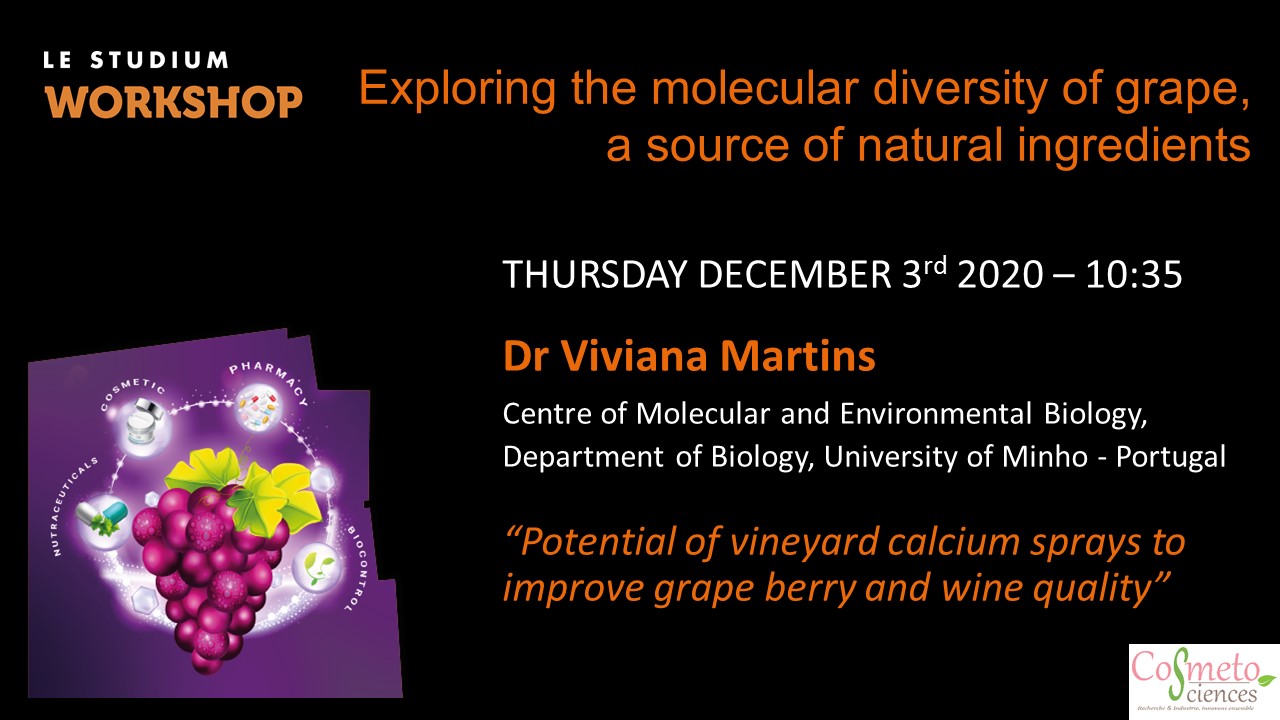Notice
Dr Paweł Siudem - Aronia melanocarpa Fruits as a Dietary Source of bioactive compounds: 1H‑NMR, HPLC-DAD, and Chemometric Studies
- document 1 document 2 document 3
- niveau 1 niveau 2 niveau 3
Descriptif
Aronia melanocarpa (Michx.) Elliott's (chokeberry) it is well knownfor the presence of anthocyanins. The fruits also contain significant amounts of otherbioactive compounds, such as chlorogenic acid and its isomer neochlorogenicacid. They exhibit antioxidant, anti-inflammatory, antidiabetic, andantibacterial activities; thus, they can have a significant impact on thehealth-promoting properties of chokeberry. In our research, we have determinedthe changes in the content of chlorogenic acids (CGA) and anthocyanins duringthe development and ripening of fruits. Aronia fruit samples from two organicfarms in Poland, were collected every two weeks from July to October. Themethods of NMR spectroscopy and HPLC-DAD were used to determine the chemicalcomposition of the prepared methanolic extracts. The obtained results wereanalyzed using chemometric analysis and multivariate statistics (PCA). Theresults showed that the content of chlorogenic acids and anthocyanins changesduring ripening and depends on the time of harvest and the region ofcultivation. A correlation between the time of CGAs reduction and the appearanceof anthocyanins was also noticed. Additionally, the antioxidant properties ofextracts were determined using three methods: DPPH, FRAP and ORAC.
Dans la même collection
-
Dr Elżbieta Sikora - Supercritical CO2 plant extracts as raw materials in modern cosmetic formulati…
New products containing active substances from the plants are systematically appearing on the cosmetics market. Among others natural products, based on raw materials that meet the standards set for
-
Dr Magdalena Malinowska - Grape cane extracts a natural ingredients with cosmetic activities
Modern and effective skin care formulations based on a natural ingredients has become the key issue in cosmetic industry. It is well known, that grapes are a rich source of many valuable compounds
-
Prof Régis Gougeon - Messages in a bottle: from oenolomics to the structural resolution of the tran…
Metabolomics applied to vine and wine sciences, has significantly developed over the last ten years. To that respect, high-resolution mass spectrometry has clearly shown unprecedented capability
-
Dr Viviana Martins - Potential of vineyard calcium sprays to improve grape berry and wine quality
Calcium (Ca) supplements have increasingly been used for improving fruit resistance to abiotic stress and shelf life, but little was known about the effects of Ca on grape berry quality. Following
Sur le même thème
-
Dr Viviana Martins - Potential of vineyard calcium sprays to improve grape berry and wine quality
Calcium (Ca) supplements have increasingly been used for improving fruit resistance to abiotic stress and shelf life, but little was known about the effects of Ca on grape berry quality. Following
-
Cafés des Sciences Nancy 2008 - L’œnologie est-elle une science ?
ParisiJean-MariePeyronDominiqueMangeotJean MichelOrganisés par les universités de Lorraine en collaboration avec l’INSERM, le CNRS, l’INRIA et l’INRA. Résumé : A quelques jours du Beaujolais nouveau, c’est l’occasion d’explorer un sujet apprécié de





